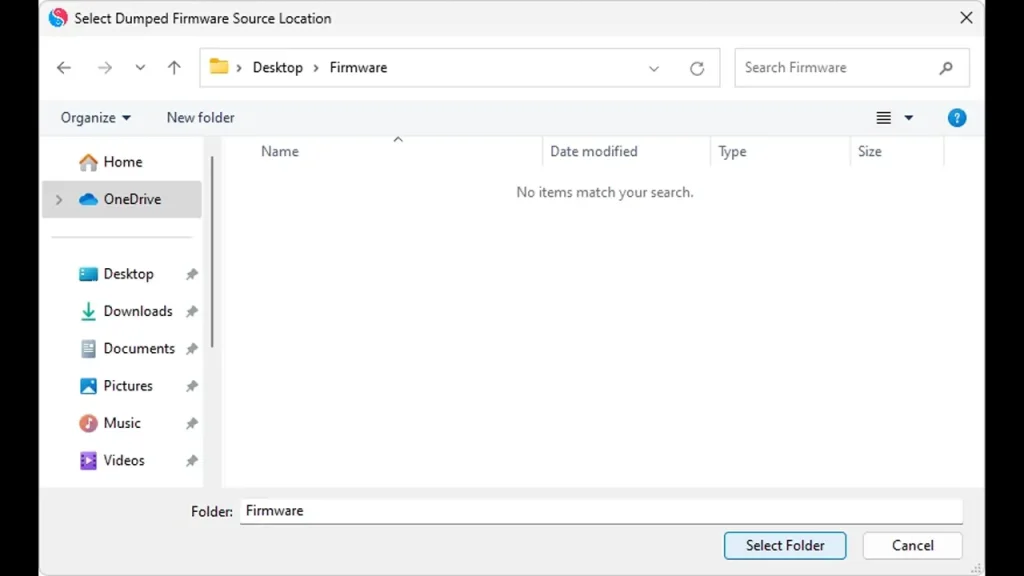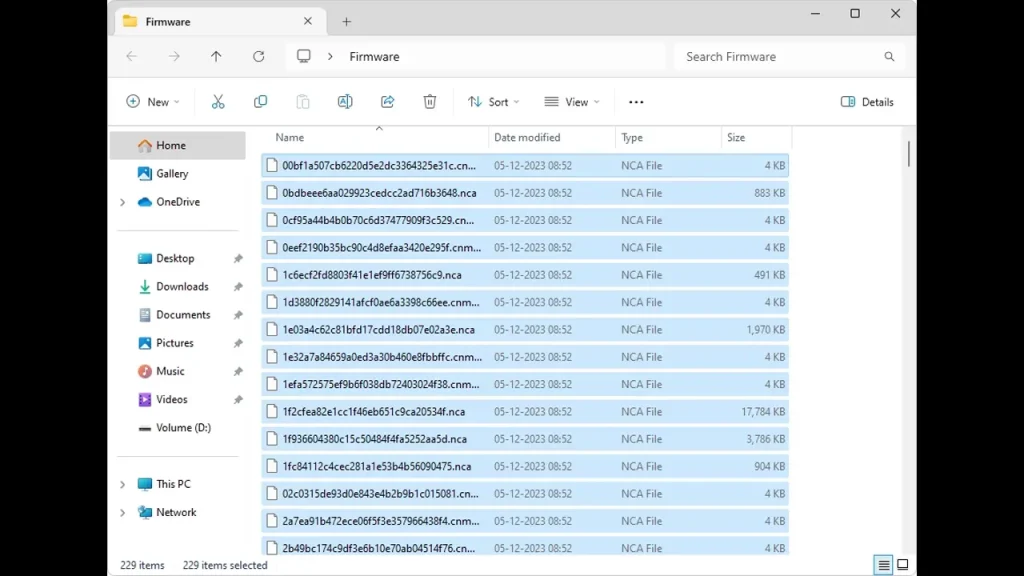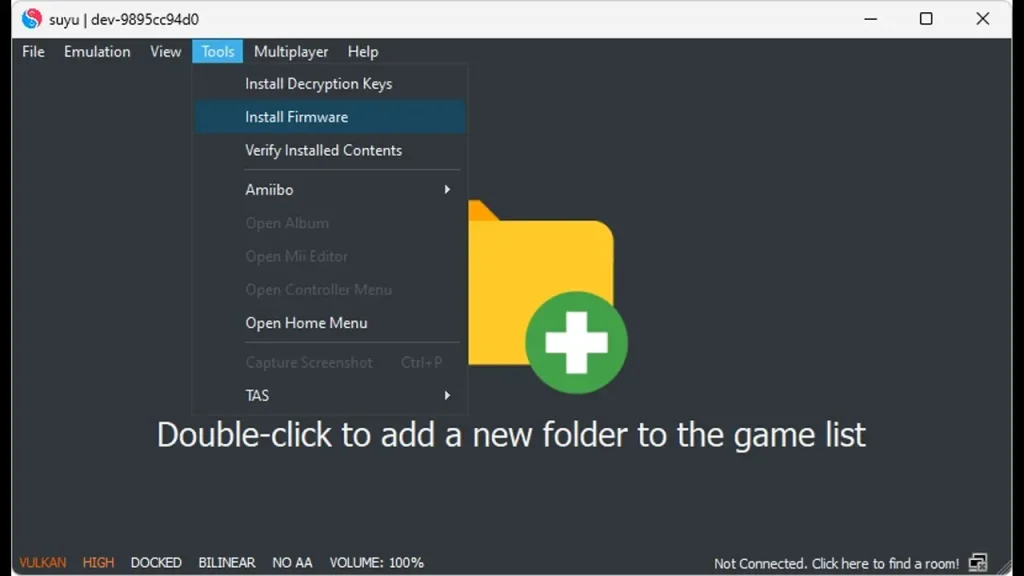All About Suyu Firmware: Download, Installation & Verify The Firmware

What is Suyu Firmware?
In the ever-evolving world of technology, the term “firmware” often surfaces, intertwined deeply with the gadgets and devices that form an integral part of our daily lives. Among these, Suyu firmware emerges as a specialized type of software, essential yet enigmatic, that helps breathe life into various electronic systems.
At its core, Suyu firmware is the low-level software that acts as the backbone for the hardware it inhabits. Unlike regular software applications that you can install and update freely on your computer or smartphone, firmware like Suyu is deeply embedded into the hardware during the manufacturing process. This integration allows it to manage the basic functions of the device, from the way it interacts with different hardware components to how it responds to user commands.
The magic of Suyu firmware lies in its ability to provide critical control and operational instructions to the device’s electronic systems. Whether it’s a digital camera, a smartwatch, or a complex server, Suyu firmware is there, silently running in the background, ensuring that your device behaves exactly as it should.
But why the focus on Suyu firmware specifically? This firmware is tailored for performance, efficiency, and reliability in devices that require robust, uninterrupted functioning. It often features customization options that manufacturers can tweak to meet the specific needs of their products, making it not just software, but a pivotal part of the product’s identity.
How to Install Switch Firmware in Suyu Emulator
Embarking on the adventure of using an emulator can transport you into a world where the typical limitations of hardware don’t apply. The Suyu Emulator, a platform revered for its robust architecture and flexibility, allows enthusiasts to replicate the experience of a Nintendo Switch. But to get started, one must first navigate the crucial step of installing the Switch firmware onto the Suyu Emulator. Here’s a step-by-step guide to help you do just that, ensuring a smooth setup and an engaging emulation journey.

Acquire the Necessary Firmware Files
Before anything else, you need to obtain the firmware files for the Nintendo Switch. It’s important to ensure that these files are sourced legally, respecting the copyright laws and terms of service associated with the device’s software. Purchasing a backup of the firmware from an authorized retailer or using files from a console you own are the safest legal routes.
Prepare the Suyu Emulator
Download and install the latest version of the Suyu Emulator from the official website. Ensure your system meets the minimum requirements to run the emulator effectively, which includes adequate processing power, memory, and graphics capabilities. Once installed, open the emulator and configure the basic settings according to your system’s specifications.
Installing the Firmware
With the firmware files at hand and the emulator set up:
- Navigate to the ‘File’ menu in the Suyu Emulator.
- Select ‘Install Firmware’ from the dropdown menu.
- Browse to the location where you’ve stored your downloaded firmware files.
- Select the appropriate file (usually named with a .bin or .dat extension) and click ‘Open’ to initiate the installation process.
The emulator will then verify the files and proceed with the installation, integrating the Switch firmware into its framework. This process might take a few minutes, depending on your system’s performance.
Verification and Setup
After the installation is complete, it’s crucial to verify that the firmware is functioning correctly within the emulator. You can do this by:
- Starting the emulator and loading a simple game or application.
- Checking for any error messages or issues during the boot process.
- Ensuring the controls and graphics render as expected.
If everything checks out, you’ve successfully installed the Switch firmware on your Suyu Emulator, and you’re all set to delve into the expansive library of Switch games, right from your computer.
Customize and Optimize

To enhance your gaming experience, explore the emulator’s settings to optimize performance and customize controls. Adjusting graphic settings, sound output, and input controls to match your preferences can significantly improve gameplay quality.
Through these steps, you not only imbue your Suyu Emulator with the essence of the Nintendo Switch but also unlock a new realm of gaming possibilities. Ready to explore further functionalities and tips on using the Suyu Emulator? Stay tuned as we dive deeper into maximizing your experience in the following sections.
Suyu Firmware Latest Version Download & Installation
Keeping your devices updated with the latest firmware is akin to giving them a new lease on life, enhancing features, improving performance, and patching security vulnerabilities. If you’re looking to download and install the latest version of Suyu firmware, follow these steps to ensure a smooth and successful update.
Checking Compatibility
First and foremost, verify that your device is compatible with the latest version of Suyu firmware. This information can typically be found on the manufacturer’s website under the support or downloads section. Compatibility details are crucial to ensure that the firmware will function correctly without causing issues to your device.
Downloading the Firmware
Navigate to the official website where Suyu firmware updates are distributed. It’s essential to use only official or trusted sources to download firmware to avoid the risks associated with malware or corrupted files.
- Once on the website, locate the section specifically for downloads or firmware updates.
- Select the model and version of your device.
- Download the latest firmware version, which is often highlighted and comes with detailed release notes that include the enhancements or fixes included in the update.
Preparing for Installation
Before initiating the installation process, make sure your device is prepared:
- Ensure your device has sufficient battery life (at least 50% charged) to avoid interruptions during the update process.
- Backup important data. Updating firmware, although generally safe, can sometimes lead to data loss if complications arise.
Installing the Firmware
Installation processes may vary slightly depending on the device, but they generally follow a standard procedure:
- Connect your device to your computer via USB, if necessary, and ensure it is recognized properly.
- Launch the device management or firmware update software provided by the manufacturer.
- Follow the software’s prompts to locate the downloaded firmware file on your computer.
- Initiate the firmware update process. The software will typically guide you through the installation, displaying progress and prompting any necessary actions.
Verifying the Installation
After the installation is complete, the device will usually reboot automatically. Once rebooted:
- Check the firmware version in the device’s settings to confirm the update was successful.
- Look for any immediate performance improvements or additional features, as indicated in the release notes.
Troubleshooting
In case of any issues during the installation:
- Refer to the manufacturer’s FAQ or support forums.
- Reattempt the installation, ensuring all steps are followed correctly.
- If problems persist, contact customer support for assistance.
Updating to the latest version of Suyu firmware not only ensures your device is up-to-date but also secures it against vulnerabilities and improves overall functionality. With your device now running the latest firmware, you are all set to enjoy the enhanced features and improved performance. Next, let’s explore some common questions users might have after updating their firmware.
How To Verify The Firmware Installation
After updating your device with the latest Suyu firmware, verifying the installation is crucial to ensure that the update was successful and the device is operating as expected. This step is not just a formality; it’s essential for confirming that the new firmware is fully functional and compatible with your device. Here’s a comprehensive guide on how to check if the firmware installation on your device went smoothly.
Check the Firmware Version
The first and most straightforward step to verify a successful firmware update is to check the firmware version directly on your device:
- Navigate to the settings menu of your device.
- Scroll to the “About” or “Device Information” section.
- Look for the firmware version listing. This should display the new version number that you installed. Compare this number with the version number you downloaded to ensure they match.
Functional Testing
After confirming the firmware version, perform a series of functional tests to ensure that all aspects of the device are operating correctly:
- Boot Test: Restart your device to ensure it boots up without any issues.
- Functionality Test: Check all basic functions, including connectivity (Wi-Fi, Bluetooth), display settings, sound, and any device-specific features like camera or sensor operations.
- Performance Monitoring: Observe the device for any unusual behaviors such as slower performance, quick battery drain, or overheating.
Look for New Features and Improvements
If the firmware update included new features or specific performance improvements:
- Refer to the update release notes for any new features added or enhancements made.
- Test these features to confirm they are present and functioning as described.
- This can include anything from UI changes, new software capabilities, or improvements in speed and responsiveness.
Use Diagnostic Tools
Some devices come with built-in diagnostic tools that can be used to check the health and functioning of the device’s hardware and software:
- Run a diagnostic test if your device supports it. This can usually be done through a specific app or through the device’s settings under a section like “Maintenance” or “Diagnostics.”
- Check for any error reports or notifications that could indicate a problem with the installation.
Monitor for Bugs or Stability Issues
In the days following the firmware update, keep an eye out for any signs of bugs or stability issues:
- Monitor for unexpected shutdowns, crashes, or freezing.
- Pay attention to user forums, social media, or official channels for any reports of common issues encountered by others who have updated their firmware. This can provide clues to any widespread problems resulting from the update.
Customer Support
If you encounter issues that you can’t resolve, or if the firmware doesn’t seem to be installed properly despite following all procedures:
- Contact the manufacturer’s customer support for guidance and troubleshooting steps.
- They can provide professional assistance and, if necessary, details on how to revert to a previous version or apply a fix.
How to Maximize Your Firmware Experience?
Updating your device’s firmware, like installing the latest version of Suyu firmware, is a critical step in enhancing performance, fixing bugs, and unlocking new features. But once you’ve successfully installed the update, how can you ensure you’re getting the most out of it? Here are some practical strategies to help you maximize your firmware experience and enjoy all the benefits that come with it.

Explore New Features and Enhancements
Firmware updates often come packed with new features, performance optimizations, or user interface changes that can significantly improve your device experience. Take some time to explore and familiarize yourself with these enhancements:
- Read the Release Notes: Each firmware update typically includes release notes that outline new features and fixes. These notes can guide you on what to look for and how to make the most of the update.
- Test the New Features: If the update introduces new functionalities, actively try them out. Whether it’s a new user interface design, added customization options, or improved hardware support, hands-on exploration helps you get comfortable with the improvements quickly.
Optimize Device Performance
Firmware updates often improve device performance by optimizing system processes and hardware management. To make the most of these changes, you can further optimize your device:
- Clear Cache and Unnecessary Data: After a firmware update, clearing the system cache can remove outdated files that may slow down your device. Most devices have a dedicated option in the settings for this.
- Reboot the Device Regularly: A simple restart can help the system integrate the changes from the firmware update more smoothly, ensuring all background processes are optimized.
- Manage Background Applications: Disable or uninstall apps running in the background that you no longer need. This frees up memory and ensures your device benefits fully from the performance enhancements included in the firmware update.
Enable Automatic Updates
Firmware updates are released periodically to address new issues or introduce further improvements. Enabling automatic updates ensures you never miss a critical firmware patch:
- Turn on Automatic Updates in Settings: Most devices allow you to enable this feature so that future updates are downloaded and installed without manual intervention. This ensures your device always operates with the latest security patches and performance boosts.
Backup Your Data Regularly
While firmware updates are designed to be smooth and seamless, there’s always a small chance that something might go wrong. Regularly backing up your data is a smart way to protect against potential data loss:
- Use Cloud Backup Services: Many devices offer integrated cloud services where you can store essential data like contacts, photos, and app settings. Ensuring you have regular backups protects you in case of device malfunction or firmware issues.
- Set Up Automatic Backups: Set your device to automatically back up data at regular intervals so that you never have to worry about remembering to do it manually.
Take Advantage of Customization Options
Firmware updates may introduce new customization options that allow you to tailor the device to your preferences:
- Customize User Interface Settings: Many firmware updates offer the ability to change themes, layouts, or display settings. Explore these to create a user interface that suits your style.
- Tweak Performance Settings: If your device has performance or battery optimization settings, experiment with different configurations to find the balance between power consumption and performance that best suits your needs.
Join User Communities and Forums
One of the best ways to maximize your firmware experience is by engaging with other users in online communities:
- Join Device-Specific Forums: User communities are an excellent resource for discovering hidden tips, solving potential issues, and learning how others are optimizing their devices after a firmware update.
- Follow the Manufacturer’s Social Media Channels: Stay updated on the latest announcements, future updates, and potential bug fixes that could improve your device experience even further.
Stay Informed About Future Updates
Firmware updates are part of a continuous process of improving and refining your device’s performance. Stay informed about upcoming updates by:
- Signing up for Newsletters: Subscribe to the manufacturer’s newsletter or blog, where they announce future firmware releases, patches, and new features.
- Checking for Updates Regularly: Even if you’ve enabled automatic updates, it’s still good practice to periodically check for firmware updates manually, especially if you notice performance issues.
Troubleshoot Issues Immediately
If you encounter any problems after a firmware update, it’s essential to address them quickly to prevent further complications:
- Refer to the Manufacturer’s Support: If you experience glitches, battery drain, or app crashes, consult the official troubleshooting guides or contact customer support for assistance.
- Rollback to a Previous Firmware Version: In rare cases, firmware updates may introduce issues incompatible with your device’s current configuration. If problems persist, you may need to revert to a previous firmware version until a patch is released. Always follow official instructions if you decide to perform a rollback.
Conclusion
The Suyu firmware is more than just a simple software update—it’s the invisible engine that powers the core functions of your device, ensuring optimal performance, improved security, and enhanced user experience. By keeping your firmware up-to-date, you not only secure your device but also unlock new features and capabilities that can transform how you interact with technology.
Installing the latest version of Suyu firmware, verifying its proper implementation, and maximizing its features through customization and optimization are key steps in harnessing the full potential of your device. By actively exploring new enhancements, optimizing performance, and staying informed about future updates, you ensure that your device remains at the cutting edge of technology.
